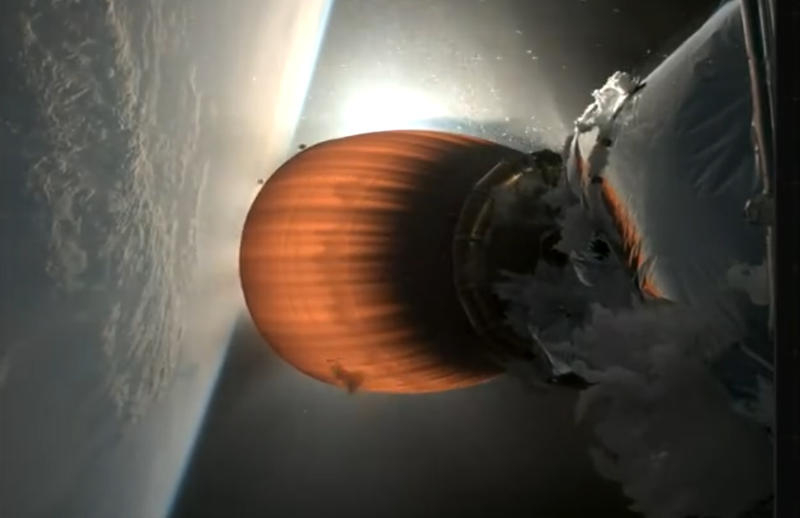SpaceX revealed the causes of the Falcon 9 accident and prepared for the next Starship launch


SpaceX said a liquid oxygen leak was the cause of a recent launch failure on its Falcon 9 rocket. The company’s main workhorse will remain on Earth while engineers investigate SpaceX’s rare failure; but the next test flight of Starship, it seems, will actually take place in August.


Image source: x.com/SpaceX
«After a planned re-ignition of the upper stage engine to raise perigee – or the lowest point of the orbit – the Merlin Vacuum engine encountered an anomaly and was unable to fire again. Although the stage survived and still deployed satellites, it was unable to successfully close its orbit, but went into a passive mode, as is usually done at the end of each mission. This left the satellites in an eccentric orbit with a very low perigee of 135 km, which is less than half the expected perigee altitude,” SpaceX said about the incident.
The Federal Aviation Administration (FAA), which authorizes all commercial launches in the United States, will require SpaceX to conduct an investigation into the incident before Falcon 9 flights resume. So far, the delay has affected several missions, including the launch of Starlink satellites, the launch of a pair of Norwegian communications satellites, and the Transporter small sharing satellite mission. Given the pace SpaceX has taken with the Falcon 9, the company doesn’t have much time to roll out the changes needed to fix the problem.
Two manned missions on Falcon 9 rockets are planned for the end of July and mid-August. One is the first commercial Polaris Dawn mission to enter outer space, the second is the delivery of a crew of four to the ISS under a contract with NASA. Northrop Grumman’s commercial mission to deliver cargo to the space station, also on a Falcon 9, is also scheduled to take place in early August.
Meanwhile, SpaceX yesterday tested 33 Raptor engines on the Starship rocket’s super-heavy booster at Starbase in South Texas. The engines worked for about eight seconds, and this was enough for the company’s engineers to be convinced that all systems were working properly. SpaceX confirmed that the static burn was carried out for the full duration, after which the methane and liquid oxygen were drained from the rocket, named Booster 12. A static burn of the six Raptor engines on Starship’s upper stage, named Ship 30, was carried out in May.
As part of its fifth test flight, SpaceX may try to return the Super Heavy booster to Starbase. And an improved heat shield will be tested on the Starship – last time, when entering the atmosphere, parts began to fall off the ship, damaging the optics of the camera from which the test flight was broadcast live. The construction of the second launch pad at the Starbase cosmodrome is in full swing – several segments of the launch tower have already been installed. Within the next two years, SpaceX intends to have two operational launch sites in Texas and two in Florida.
Recent Posts
Nissan Leaf EV to Become NACS-Ported Compact Crossover in Third Generation
Nissan Leaf can rightfully be considered a long-liver of the electric car market, since the…
OpenAI expects to more than triple its revenue this year and then double it next year.
OpenAI, the market leader in generative artificial intelligence systems, remains nominally a startup, its financial…
OpenAI Decides to Hold 4o Image Generation Launch for Free Users
OpenAI has been forced to delay the release of ChatGPT's built-in image generator for free…
1440p and 240Hz for just $200: Xiaomi updates the 27-inch Redmi G27Q gaming monitor
Xiaomi continues to update its Redmi G27Q gaming monitor every year. The model was first…
Beware, Android is shutting down: OS development will cease to be public, but there is no reason to panic
Android device makers can significantly customize the look and feel of the operating system, but…
Fake GeForce RTX 4090s with RTX 3090 chips have started popping up in China — craftsmen are even changing the GPU markings
In China, scammers have started selling GeForce RTX 3090 graphics cards, passing them off as…